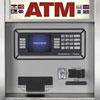
How Cyberthieves Stole $45 Million from ATMs and How You Can Protect Your ATM Card
- By Ginger Hill
- May 16, 2013

With a goofy, gangster-style grin across his face, Emir Yasser Yeje points to a stack of cash held by Elvis Rafael Rodriguez. (Which by-the-way, blows my mind that the thieves would take a picture, probably with their 'smart' phone, documenting that they were involved. Too bad they weren't 'smart'!)
Yeje and Rodriguez are two of the seven individuals arrested in the U.S. accused of operating a global network (supposedly in 27 countries), stealing an astonishing $45 million in mere hours from cash/ATM machines. Replacing black ski masks and guns with laptops and the Internet, the cyberthieves worked in unison to rob ATMs of their paper money.
Here's how it worked:
- Hackers breached the bank databases, eliminated withdrawal limits on pre-paid debit cards and created access codes.
- Others involved loaded the data onto any plastic card with a magnetic stripe (hotel room access cards, out dated credit cards, gift cards).
- A network of operatives fanned out, rapidly withdrawing money in multiple cities across the world.
- Each person would take a cut of the money, launder it and/or ship it to global ringleaders.
According to Brooklyn U.S. Attorney Loretta Lynch, it appears that the thieves plundered funds held by banks to back up prepaid credit cards. So, individuals and business accounts did not lose any of their funds.
With this event happening less than a week ago and with the security industry a bit shaken to say the least, how can you keep your magnetic-striped, ATM card(s) safe?
- Try to use ATMs at your local bank’s branch. According to the U.S. Department of Financial Services, “It may be easier for criminals to tamper with a machine that is in a non-bank location.”
- Use your body or hand to create a shield on the ATM keyboard when entering your PIN number. Small buttons can be installed on the surveillance cameras focused on ATMs that allow thieves to steal your pin number.
- Be sure to look out for people standing in your “personal space” while entering your PIN number. That person may be trying to memorize your PIN number.
- Check the ATM. Make sure the card slot does not have an attachment, there is no sticky residue on the machine and that the keypad isn’t resistant when pushing the buttons. These could all be signs that thieves are copying your card or have tampered with ATMs.
- Keep usage of the ATM to a minimum, so plan ahead of time. Approach the machine with card in hand, and do not open your wallet once you are near the machine.
- Do not count the distributed cash near the ATM. Instead, take all the cash, and put it directly into an envelope.
- Do not use ATMs after dark. Try to opt for day-only transactions. If you must use an ATM after dark, make sure to use one that is in a well lit area.
Sources:
http://blogs.wsj.com/indiarealtime/2013/05/13/atm-heist-how-to-protect-your-card/
http://news.yahoo.com/global-network-hackers-steal-45m-atms-072335721.html
About the Author
Ginger Hill is Group Social Media Manager.